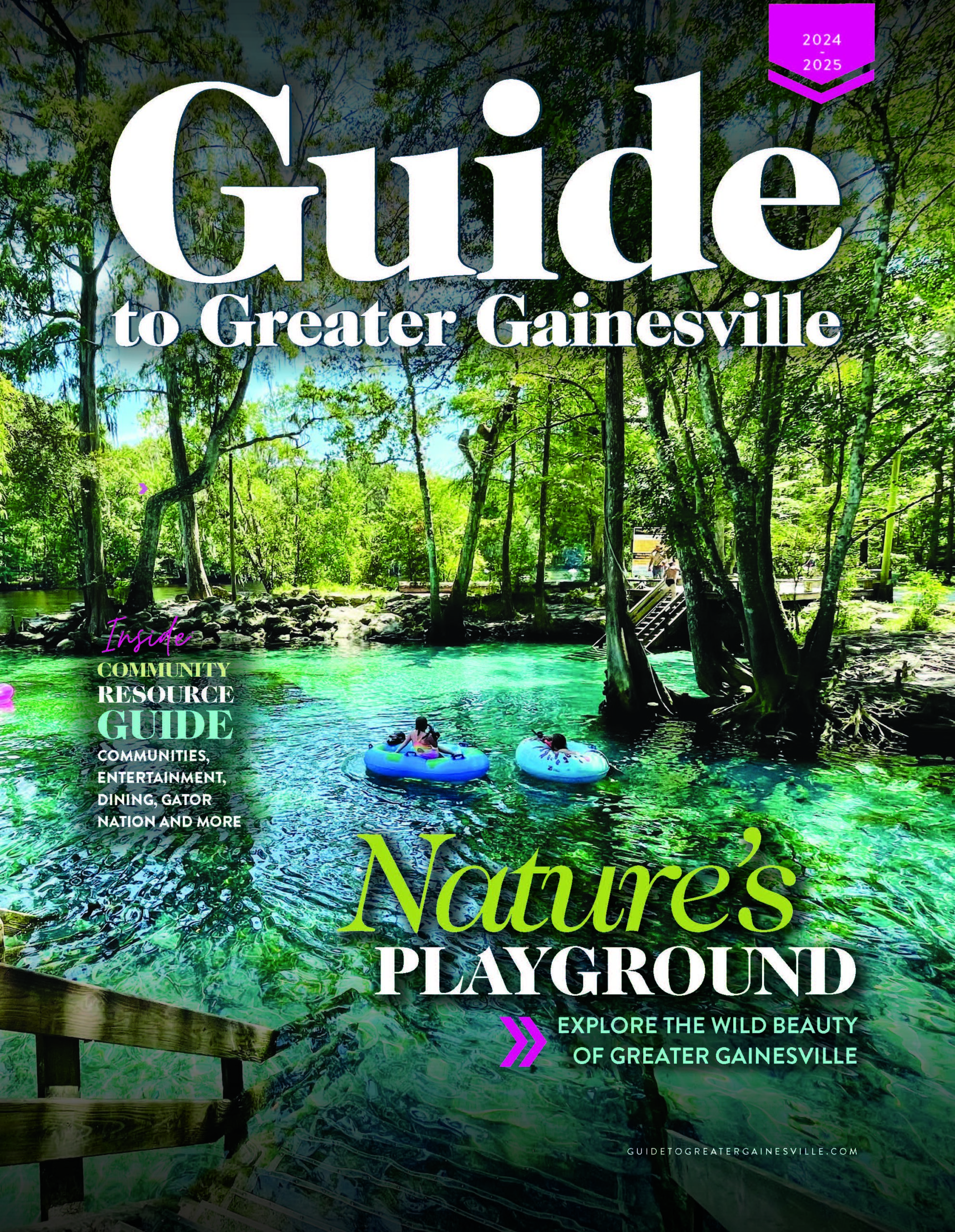Dating back to the late 1890s, the Florida Museum of Natural History is celebrating it’s 1917 move to Gainesville. The centennial of the museum praises the last 100 years while looking forward to the next 100. The Florida Museum forms an entity that displays more than just natural artifacts, thriving organisms and diverse cultures, but it also provides for an enriched economic environment to the local region.
“When we plan our fiscal year we want to make sure we’re going to have exhibits that people will want to see,” Beverly Sensbach, associate director of the museum, said. “We pick exhibits that are interesting and educational to the public.”
With a budget of about $30 million a year, the museum relies heavily on visitors and earned income more and more; however, the museum receives grants and contracts from local and state organizations and businesses such as First Magnitude Brewing Co. and Disney World.
“We’ve been really fortunate that visitation continues to increase, and of course that has made us more and more sustainable. Even though we’re the state museum, when looking at the museum’s revenue we get less than 30 percent actually coming from the state of Florida. Our earned income piece is about $2.5 billion each year.” Dr. Douglas Jones, director and curator of the museum, said.
With more publicity and visitors increasing the museum’s earned income, the museum keeps an accurate count of people at the front desk, and in 2016 the guest count reached nearly 210,000 people. Looking at guest demographics, families with children account for the largest category of visitors. According to Jones, 50-to-60 percent of visitors come from the surrounding 12-county area.
“We keep a count of University of Florida students who come to the museum, and last year we had a little over 15,000 students come to the museum for one program or another, go through the butterfly rainforest or just to see the exhibits,” Jones said.
The butterfly rainforest and the museum itself are rated both number one and two on Trip Advisor, respectively, for things to do in Gainesville, bringing increased tourism to the region.
“We get reports from folks all the time who come to visit us who say they made a special trip to Gainesville to see the butterfly rainforest or see a specific exhibit we have. So we attract visitors from out of the state in addition to visitors from within the state and in the surrounding counties,” Sensbach said.
According to Jones, the museum began detailed customer service and visitor analyses, and surprisingly the summer months of June through August were the most visited times of year.
Employing the college of business at UF to calculate the economic impact of the museum, “they calculated that we have an economic impact on the state of Florida of $74 million per year,” Jones said.
However, it’s important to realize the museum itself is free with the exception of the butterfly rainforest and any temporary exhibit rented from other institutions.
“There shouldn’t be any economic deterrent to coming,” Jones said. “Visitors that come to the museum can visit for free or they can pay; we have combination tickets available. The spending is quite variable, but about half of the people that visit the museum pay to go into the rainforest or into the traveling exhibit we have on hand.”
The centennial of the museum in Gainesville welcomes more opportunities as well as new additions to give visitors a whole new museum experience. According to Sensbach, they hope these new attractions will raise people’s awareness of what the museum has in their collections, why they’re important and their potential future use for the environment and society.
“In our anniversary year we have done a few things to prepare for and try to enhance visitor experience here in Gainesville. One of the things we did was the frog exhibit which is a really fun and lovely exhibit,” Sensbach said. “It has been very, very popular.”
Building a bigger online presence for the anniversary, the FLMNH developed an online platform for the special centennial exhibit: “Rare, Beautiful and Fascinating: 100 Years at the Florida Museum.” This web-based, interactive exhibit will feature all the objects that will be showcased inside the museum, including high resolution photos, a timeline and information about the collection’s pieces.
“Our museum technology employees conducted interviews with curators and collections managers and these interviews are available online, so anybody who goes into the exhibit can use it as an audio guide as they walk around. But even if you live in New Zealand you can access everything that’s in our 100th anniversary exhibit because of this online web gallery,” Sensbach said.
Leading up to the exhibit’s September debut, the museum’s team has been releasing a new collection each day through social media platforms such as Twitter and Facebook hoping to buildup excitement and bring in more visitors than before.
“I really see us on the map for cultural tourism,” Jones said. “Gainesville personifies art, culture and nature all coming together. The UF cultural plaza really makes that
a destination.”
The Florida Museum focuses on bettering not only itself, but also providing for a fertile environment that allows for the natural community to grow. The impact the museum has on the economic progress of Gainesville is an important factor toward the overall growth of the local region.
“The centennial has been a good year for us to take stock of what we do,” Jones said. “We like to celebrate everything that’s been accomplished in the last 100 years, but what we really want to do is look forward to the next 100 years and ask ourselves how we can have an even greater impact because we all believe really passionately in this special area of Gainesville and Florida in general.”
Photography provided by Kristen Grace, courtesy of Florida Museum
MAGEN BRUBAKER is a third-year journalism student at the University of Florida with a concentration in political science. When she’s not obsessing over her two dogs, she’s traveling with friends and dancing at music festivals. After graduation, Magen hopes to move to New York City and eventually write for Saturday Night Live


